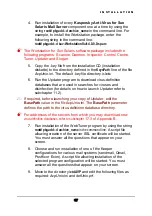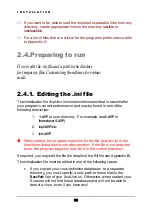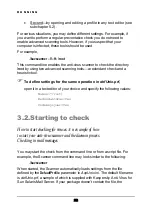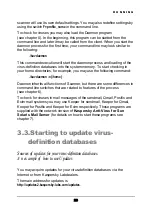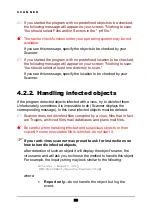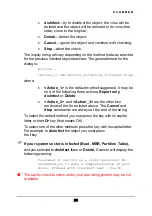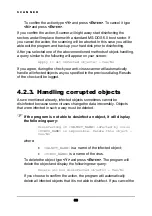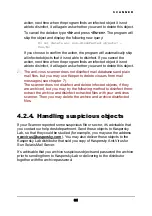
R U N N I N G
•
Second—by opening and editing a profile in any text editor (see
subchapter 5.2).
For various situations, you may define different settings. For example, if
you want to perform a regular preventative check you do not need to
enable advanced scanning tools. However, if you suspect that your
computer is infected, these tools should be used.
For example,
./kavscanner –V –H- /root
This command line enables the anti-virus scanner to check the directory
/root
by using two advanced scanning tools—a redundant check and a
heuristic tool.
To define settings for the same operation in
defUnix.prf
,
open it in a text editor of your choice and specify the following values:
Names=*/root;
RedundantScan=Yes
CodeAnylyser=Yes
3.2. Starting to check
How to start checking for viruses. An example of how
to start your anti-virus scanner and the daemon process.
Checking in mail messages.
You may start the check from the command line or from a script file. For
example, the Scanner command line may look similar to the following:
./kavscanner
When started, the Scanner automatically loads settings from the file
defined by the
DefaultProfile
parameter in
AvpUnix.ini
. The default file name
is
defUnix.prf
, a sample of which is supplied with Kaspersky Anti-Virus for
Sun Solaris Mail Server. If your package doesn’t contain the file, the
22










